Nvidia GeForce GTX 1080 Pascal Review
Hitman, CARS And Rise Of The Tomb Raider Results
Hitman
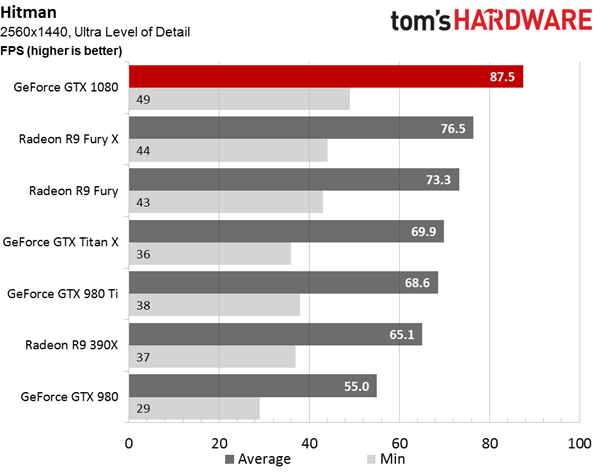
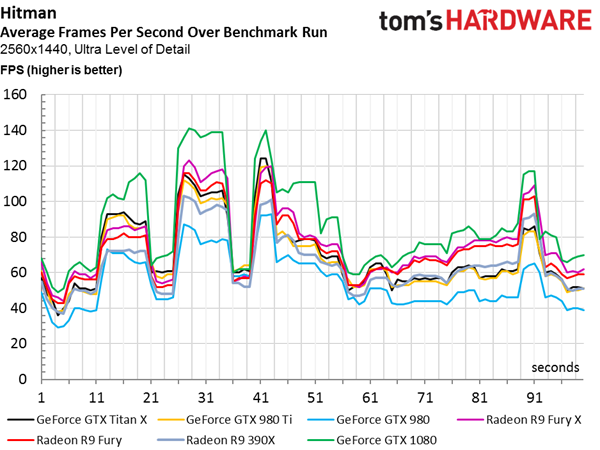
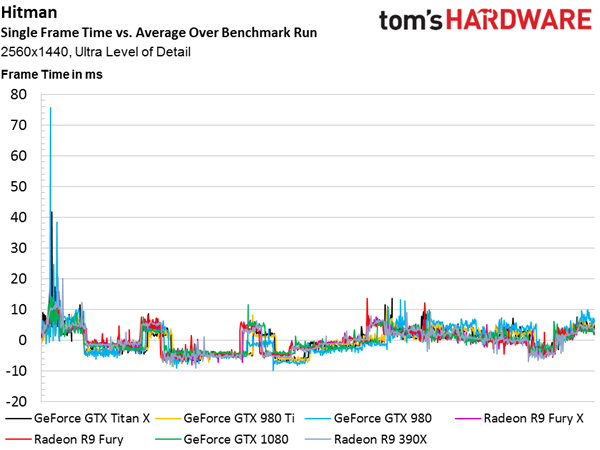
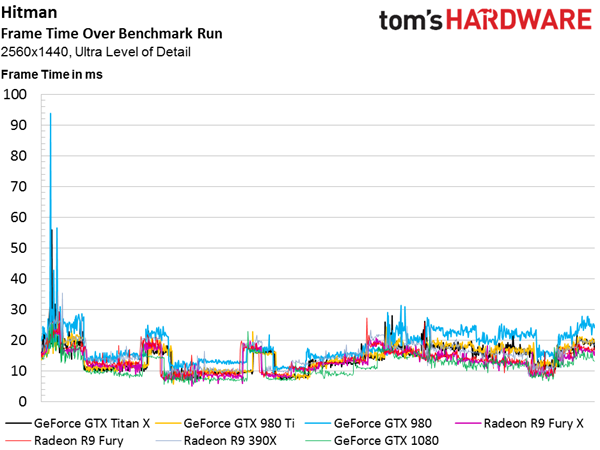
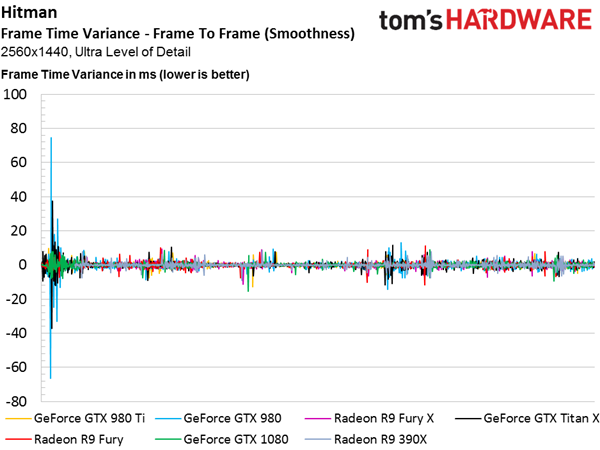
At this point, we can probably all agree that the fastest previous-gen cards were ample for QHD—GeForce GTX 980 Ti and Radeon R9 Fury X have little trouble at 2560x1440, even when you max out detail settings.
But the GeForce GTX 1080 continues its winning streak with a greater-than 27% boost over the 980 Ti and 59% faster frame rates than the 980. It needs those big numbers, too. After all, AMD’s cards perform well in Hitman, with the Radeon R9 Fury X and Fury besting Nvidia’s thousand-dollar-plus GeForce GTX Titan X. Not bad when you consider Sapphire’s Nitro Fury card costs half as much.

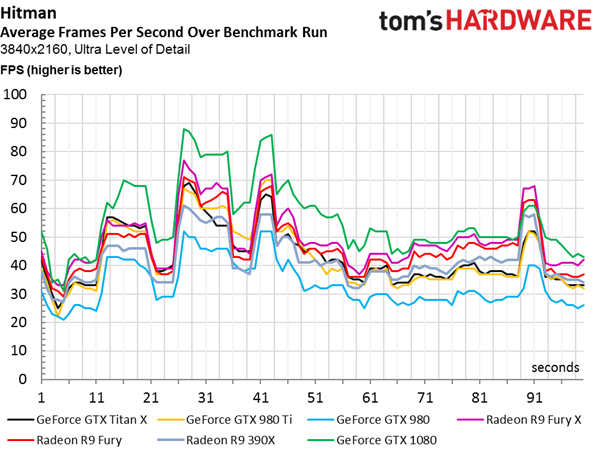
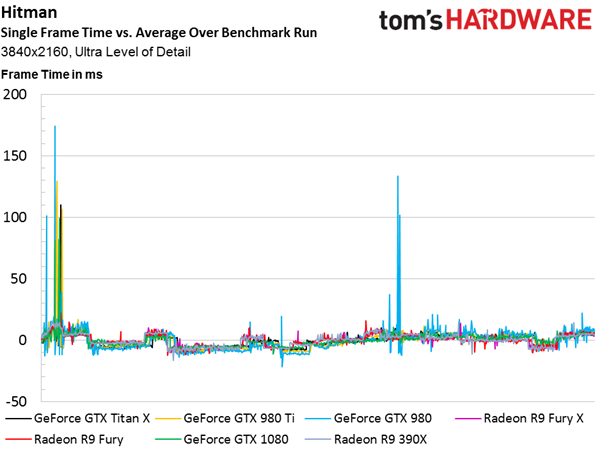

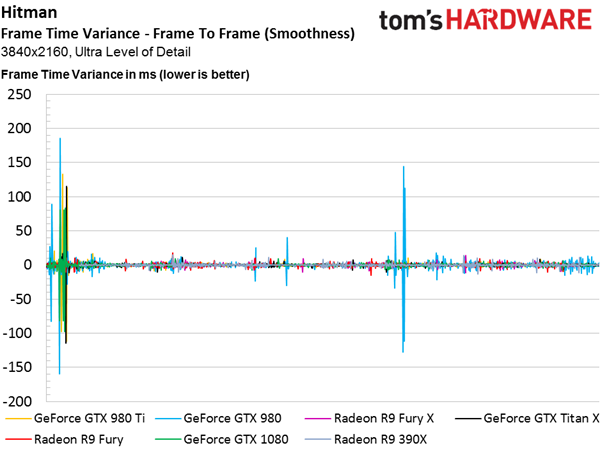
The same story carries over to 4K, where Nvidia uses GeForce GTX 1080 to catch the Fiji-based boards that were trouncing its fastest Maxwell-based hardware.
Interestingly, the GeForce GTX 980 is affected by frame time variance spikes that affect smoothness at 3840x2160. In the frame time chart, you can see its turquoise line above the competition—a tell-tale sign of lower frame rates. The pops above that trend line are what affect smoothness most severely.
Project CARS
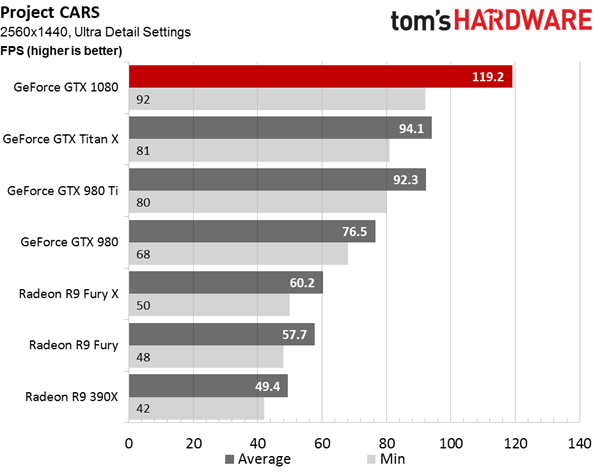
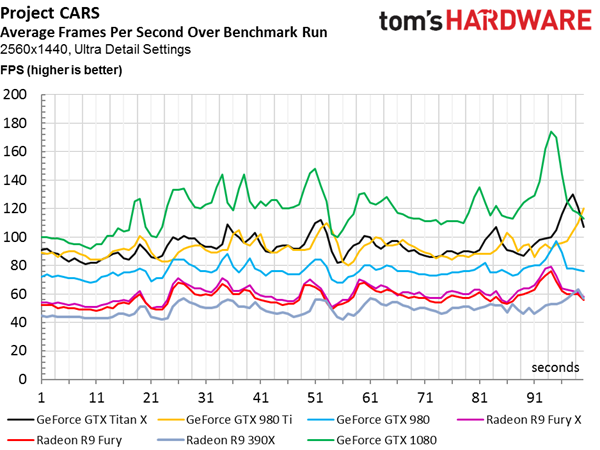
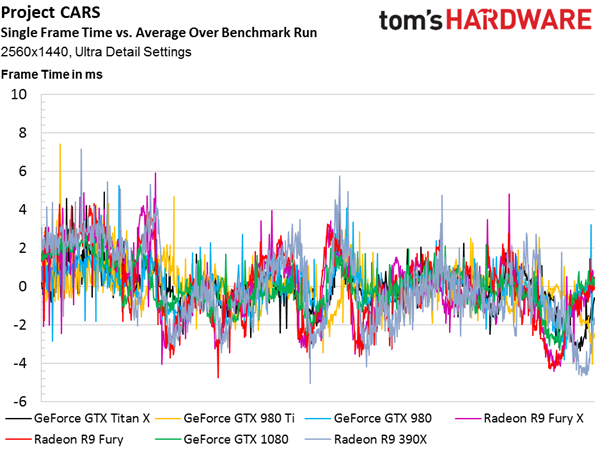
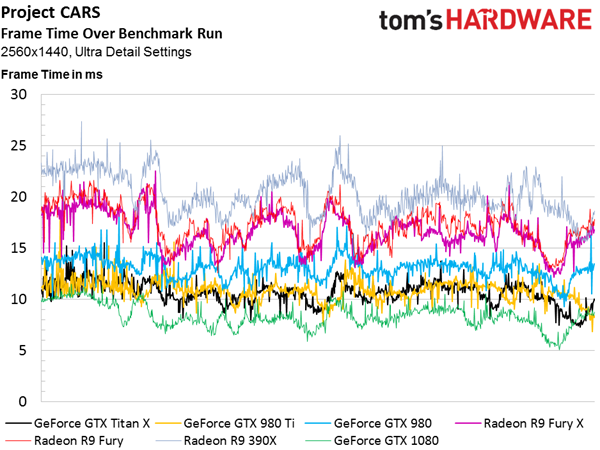
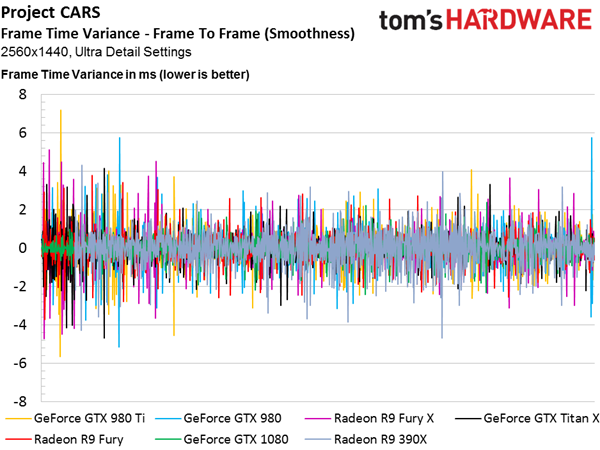
Project CARS is a tough title to test; it requires driving as consistent a line as possible around the track. Still, the results we derive from the game line up fairly well with what we’ve seen so far. With minimum frame rates greater than 40 across the board and averages starting around 50 FPS, any of these cards is ample for 2560x1440.
Though the frame time chart makes it clear that we’re dealing with a wide range of performance from Radeon R9 390X to GeForce GTX 1080, the frame-to-frame variance assures us of satisfying smoothness.
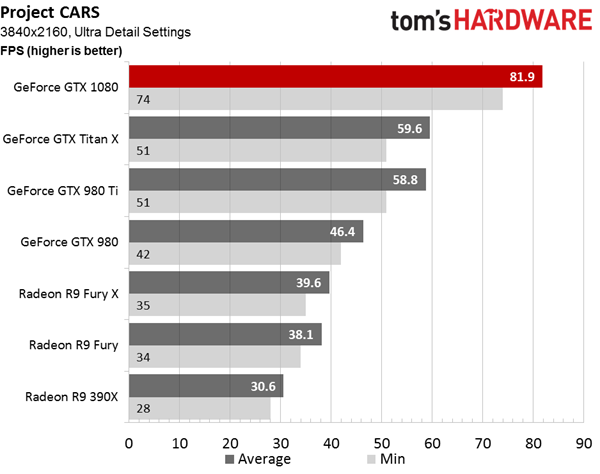
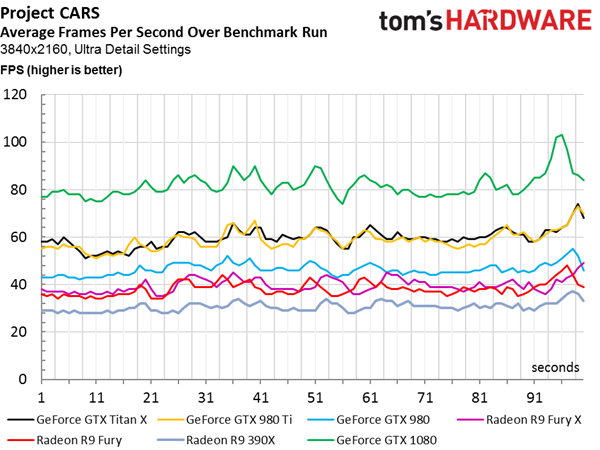
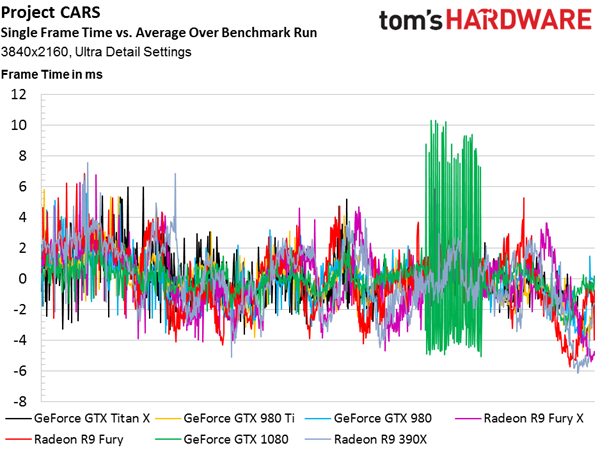
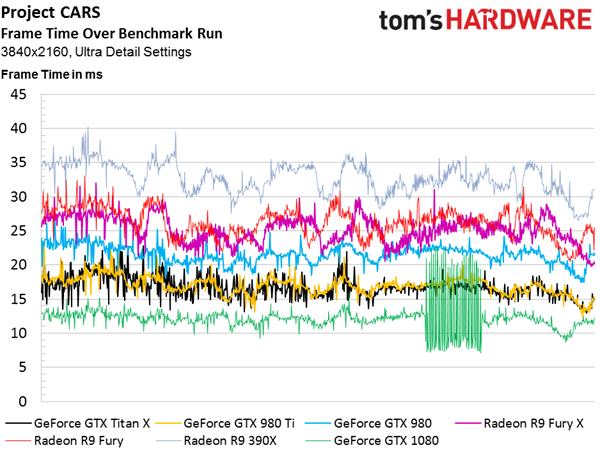
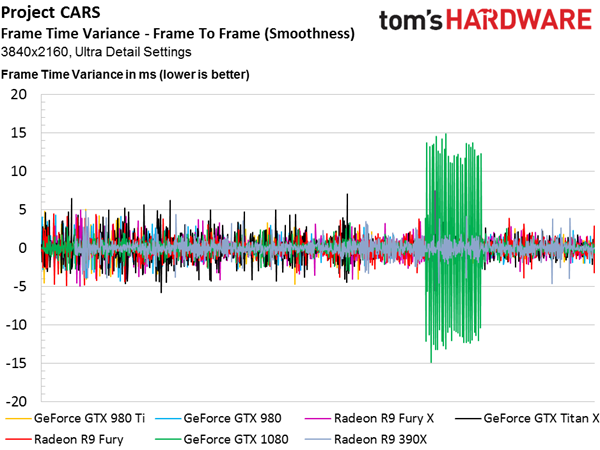
Jumping to 4K has a profound impact on performance. AMD’s line-up was already disadvantaged at 2560x1440, its top-end Radeon R9 Fury X losing to the slowest GeForce we’re testing (GTX 980). But now the Radeon R9 390X averages just over 30 FPS, while the Fury and Fury X hover below 40 FPS. A GeForce GTX 1080 more than doubles the performance of a Fury X (it’s 107% faster). The 1080 is also more than 76% faster than a GeForce GTX 980.
Get Tom's Hardware's best news and in-depth reviews, straight to your inbox.
This time last year, Slightly Mad Studios denied accusations that it crippled performance on AMD GPUs. AMD representatives followed up with assurances that the company’s driver team was working on a fix to improve its standing in Project CARS. This is the first time we’ve used the game in our benchmark suite—it’s gorgeous, after all. But we can’t say how much better the Radeons are now compared to then. Clearly, work is still needed.
Rise Of The Tomb Raider
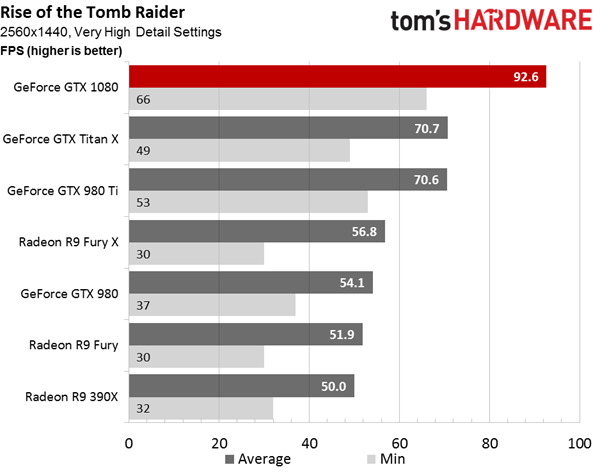
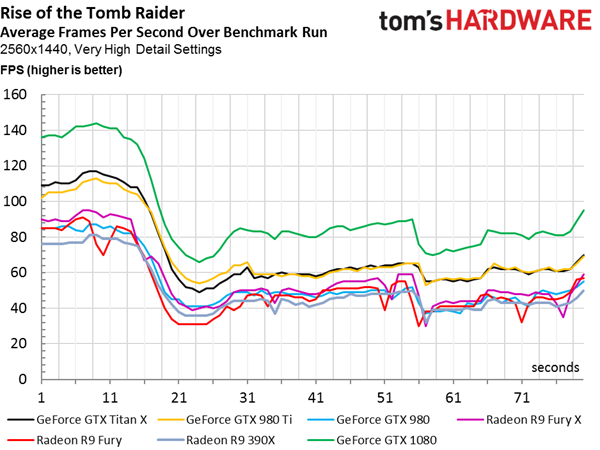
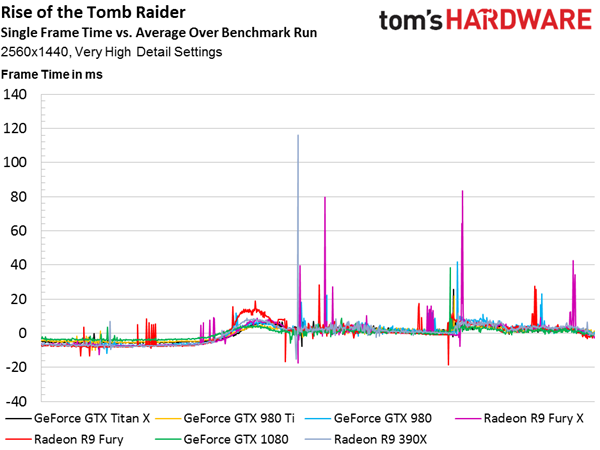
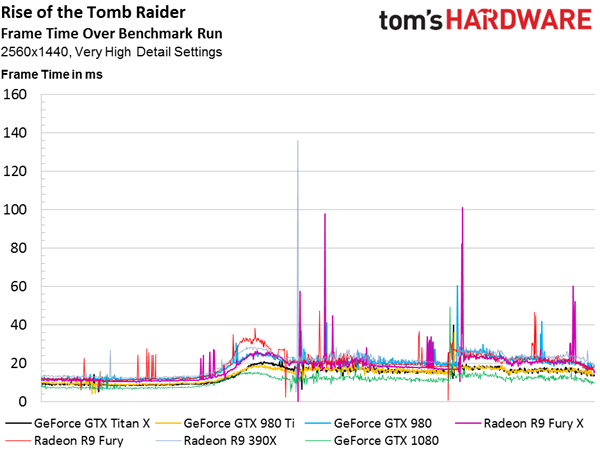

Rise of the Tomb Raider similarly favors Nvidia hardware, though not to the same extent as Project CARS. The GeForce GTX Titan X and 980 Ti both handle this title well. Four cards appear in quick succession under those prior-gen flagships, while the GeForce GTX 1080 posts an average frame rate 71% quicker than a 980. All of these cards are playable, though that probably won’t be the case as we shift gears to 3840x2160.
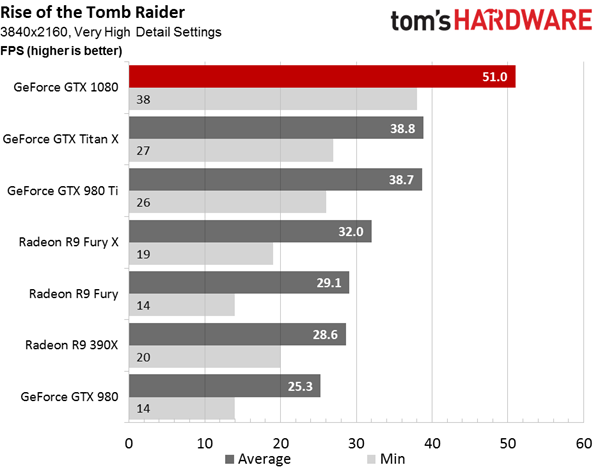
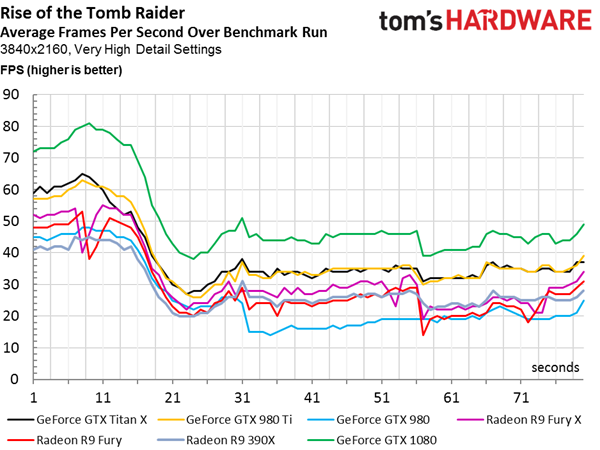
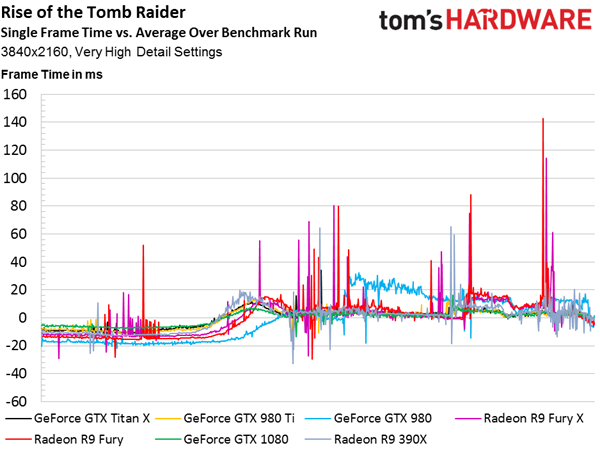
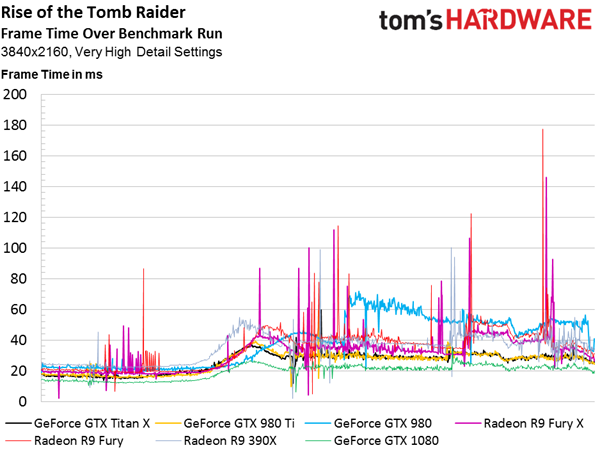
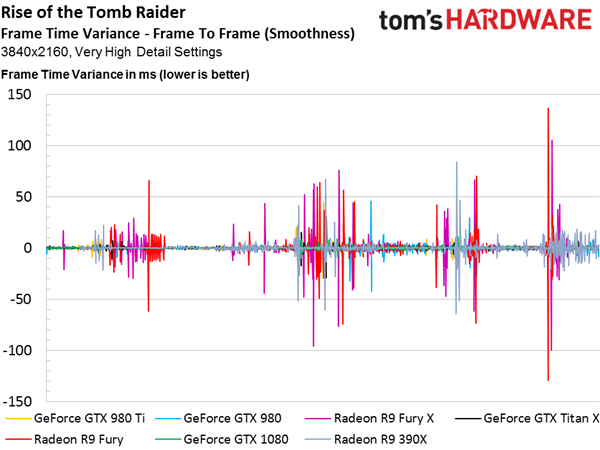
Despite our best efforts to keep the playing field equal in Rise of the Tomb Raider (the Ambient Occlusion setting is left at “On” rather than “HBAO+” to circumvent Nvidia’s one GameWorks feature), AMD’s Fiji-based cards trail Nvidia’s GM200-based boards. Moreover, the Radeon R9 Fury X and Fury both exhibit straight frame time spikes that stand out prominently in the smoothness chart as jarring latency issues.
Not that this matters much at 4K. Frame rate over time shows the Radeon R9 Fury X, Fury, 390X and GeForce GTX 980 bottoming out at 20 FPS or less. Their average frame rates start at 32 and fall from there. All of them require you to make some quality setting compromises for playability.
Could those numbers be affected by on-board memory? After all, the Radeon R9 390X with 8GB achieves better minimum frame rates than either Fiji-based card, and the GeForce GTX 980 with 4GB similarly suffers much more than it should. In fact, the GeForce GTX 1080 is 101% faster!
Current page: Hitman, CARS And Rise Of The Tomb Raider Results
Prev Page Ashes Of The Singularity, Battlefield 4 And GTA V Results Next Page The Division And The Witcher 3 Results-
JeanLuc Chris, were you invited to the Nvidia press event in Texas?Reply
About time we saw some cards based of a new process, it seemed like we were going to be stuck on 28nm for the rest of time.
As normal Nvidia is creaming it up in DX11 but DX12 performance does look ominous IMO, there's not enough gain over the previous generation and makes me think AMD new Polaris cards might dominate when it comes to DX12. -
slimreaper Could you run an Otoy octane bench? This really could change the motion graphics industry!?Reply
-
F-minus Seriously I have to ask, did nvidia instruct every single reviewer to bench the 1080 against stock maxwell cards? Cause i'd like to see real world scenarios with an OCed 980Ti, because nobody runs stock or even buys stock, if you can even buy stock 980Tis.Reply -
cknobman Nice results but honestly they dont blow me away.Reply
In fact, I think Nvidia left the door open for AMD to take control of the high end market later this year.
And fix the friggin power consumption charts, you went with about the worst possible way to show them. -
FormatC Stock 1080 vs. stock 980 Ti :)Reply
Both cards can be oc'ed and if you have a real custom 1080 in your hand, the oc'ed 980 Ti looks in direct comparison to an oc'ed 1080 worse than the stock card in this review to the other stock card. :) -
Gungar @F-minus, i saw the same thing. The gtx 980Ti overclocks way better thn 1080, i am pretty sure OC vs OC, there is nearly no performance difference. (disappointing)Reply -
toddybody Reply@F-minus, i saw the same thing. The gtx 980Ti overclocks way better thn 1080, i am pretty sure OC vs OC, there is nearly no performance difference. (disappointing)
LOL. My 980ti doesnt hit 2.2Ghz on air. We need to wait for more benchmarks...I'd like to see the G1 980ti against a similar 1080. -
F-minus Exactly, but it seems like nvidia instructed every single outlet to bench the Reference 1080 only against stock Maxwell cards, which is honestly <Mod Edit> - pardon. I bet an OCed 980Ti would come super close to the stock 1080, which at that point makes me wonder why even upgrade now, sure you can push the 1080 too, but I'd wait for a price drop or at least the supposed cheaper AIB cards.Reply -
FormatC I have a handpicked Gigabyte GTX 980 Ti Xtreme Gaming Waterforce at 1.65 Ghz in one of my rigs, it's slower.Reply
